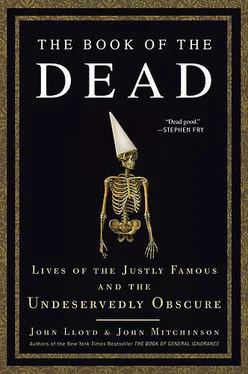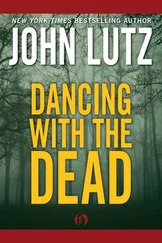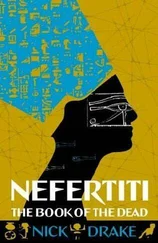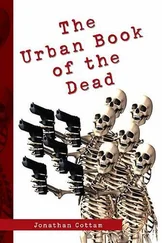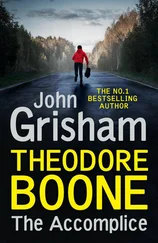In E. M. Forster’s novel A Room with a View , Mr. Emerson remarks that getting through life is like “a public performance on the violin, in which you must learn the instrument as you go along.” The major attraction of the Dead is that the violin has been put back in its case, and their lives—however short, discordant, or tuneless—have a definite beginning, middle, and end. That is their chief advantage over those of us who are still trying to spot the tunes in our own swirling cacophony: We can see or hear more clearly how one thing leads to another.
The original Egyptian and Tibetan Books of the Dead were kind of early self-help manuals, practical guides to getting the best out of the afterlife. Anyone hoping for the same in the pages that follow will be disappointed (as will those looking forward to 90 billion entries in the index). This is a book that is more interested in questions than answers, and in tapping into interesting connections rather than building a closed system of classification.
Above all, there’s nothing like hanging out with the Dead to point up the sheer improbability of being alive. As the emphatically not-dead American writer Maya Angelou reminds us: “Life loves to be taken by the lapel and told: ‘I am with you kid. Let’s go.’”
JOHN MITCHINSON
CHAPTER ONE
There’s Nothing Like a Bad Start in Life
Leonardo da Vinci—Sigmund Freud—Isaac Newton–Oliver Heaviside—Lord Byron—Ada Lovelace—Hans Christian Andersen—Salvador Dalí
Whoever has not got a good father should procure one.
FRIEDRICH NIETZSCHE
Our early experiences shape our character and the way our lives unfold, and a poor start can, of course, blight a person’s prospects forever. But there is a more mysterious path that leads from truly dreadful beginnings to quite extraordinary achievement. As the Canadian novelist Robertson Davies put it: “A happy childhood has spoiled many a promising life.”
Some of the most famous people in history had childhoods that were wrecked by a dead, absent, or impossible father. We have chosen eight, but the list could have been twenty times as long. Once you start to notice, they sprout up everywhere: Confucius, Augustus Caesar, Michelangelo, Peter the Great, John Donne, Handel, Balzac, Nietzsche, Darwin, Jung, Conan Doyle, Aleister Crowley—all of them victims of what psychologists would call inappropriate parenting.
In the five hundred years since his death, Leonardo da Vinci(1452–1519) has become our model for the solitary genius, the ultimate Renaissance man. The common wisdom is that, as with Shakespeare, we know his work in great detail but next to nothing about his life. This is a myth. In fact, and again as with Shakespeare, we know much more about Leonardo than we do about the vast majority of his contemporaries. We know he was illegitimate, the son of a notary in the small Italian hill town of Vinci, and that his mother, Caterina, was either a local peasant or an Arabic slave (recent analysis of the artist’s inky fingerprints tends to suggest the latter). His father, Piero, quickly married off Caterina to a bad-tempered local lime-burner [2] Lime-burners heated chalk in a kiln to 1,100°C, to make quicklime, the main ingredient of mortar (the forerunner of cement) used in building. It was an important but badly paid and dangerous job. The dust could cause blindness or spontaneously combust, producing hideous burns. On top of that, carbon monoxide released by the process made the lime-burners dizzy. It was an easy matter to fall into the kiln and be incinerated.
and the young Leonardo found himself abandoned. His father went on to marry four times and sire another fifteen children; his mother also had new children of her own and refused to treat Leonardo as her son. Worse still, as a bastard, he was prevented from going to a university or entering any of the respectable professions, such as medicine or law.
Leonardo’s response was to withdraw into a private world of observation and invention. The key to understanding his genius isn’t in his paintings—extraordinary and groundbreaking though they are—but in his notebooks. In these thirteen thousand pages of notes, sketches, diagrams, philosophical observations, and lists, we have one of the most complete records of the inner workings of a human mind ever committed to paper. Leonardo’s curiosity was relentless. He literally took apart the world around him to see how it worked and left a paper trail of the process. This was firsthand research: He had to see things for himself, whatever that meant. He personally dissected more than thirty human corpses in his lifetime, even though it was a serious criminal offense. This wasn’t motivated by any medical agenda: He just wanted to improve the accuracy of his drawing and deepen his understanding of how the body worked (he ridiculed other artists’ depictions of human flesh, saying they looked like “sacks of nuts”). Out of the notebooks flowed a succession of inventions, some fantastical but others entirely practical: the first “tank,” the first parachute, a giant siege crossbow, a crane for emptying ditches, the very first mixer tap for a bath, folding furniture, an Aqua-Lung, an automatic drum, automatically opening and closing doors, a sequin maker, and smaller devices for making spaghetti, sharpening knives, slicing eggs, and pressing garlic. It was here, too, that Leonardo recorded his remarkable insights into the natural world: He was the first to notice how counting tree rings gave the age of the tree and he could explain why the sky was blue three hundred years before Lord Rayleigh discovered molecular scattering.
Each page of the notebooks looks like an excerpt from a vast handwritten visual encyclopedia. Paper was expensive so every inch was covered in Leonardo’s neat script, all of it written back to front, which means you need a mirror to make it intelligible. No one knows why he chose to write this way. Perhaps as a lefthander he found it easier writing right to left; perhaps he didn’t want people stealing his ideas. Whatever the reason, it’s the perfect physical representation of his awkward genius. Leonardo didn’t really care about fitting in or what others thought. He was a vegetarian when almost no one else was because he empathized with animals (one of his obsessions was setting free caged birds). Despite being commissioned by some of the most powerful grandees in Europe, he rarely finished any project he started. What mattered to him was to be free to do his own thing, to achieve the control over his life that had eluded him as an abandoned child:
It had long since come to my attention that people of accomplishment rarely sat back and let things happen to them. They went out and happened to things.
Most of us picture him as he appears in the one authenticated self-portrait: a sixty-year-old, bald, and bearded sage, a loner. But the young Leonardo was something quite different. His contemporary, the biographer Giorgio Vasari (1511–74), was unambiguous: He was a man “of physical beauty beyond compare.” And that wasn’t all, he was freakishly strong:
There is something supernatural in the accumulation in one individual of so much beauty, grace, and might. With his right hand he could twist an iron horseshoe as if it were made of lead.
And a charmer:
In his liberality, he welcomed and gave food to any friend, rich or poor… his speech could bend in any direction the most obdurate of wills.
But cross him and you’d have to deal with his “terrible strength in argument, sustained by intelligence and memory.” This is Leonardo, the gay Florentine about town, who was anonymously accused (and acquitted) of sodomy, whose teenage pupil and companion was known as Salai (“limb of Satan”), the precocious artist whose collection of pornographic drawings was eventually stolen from the Royal Collection in Windsor Castle, according to the art critic Brian Sewell, by a distinguished German art critic in a Sherlock Holmes cloak:
Читать дальше
